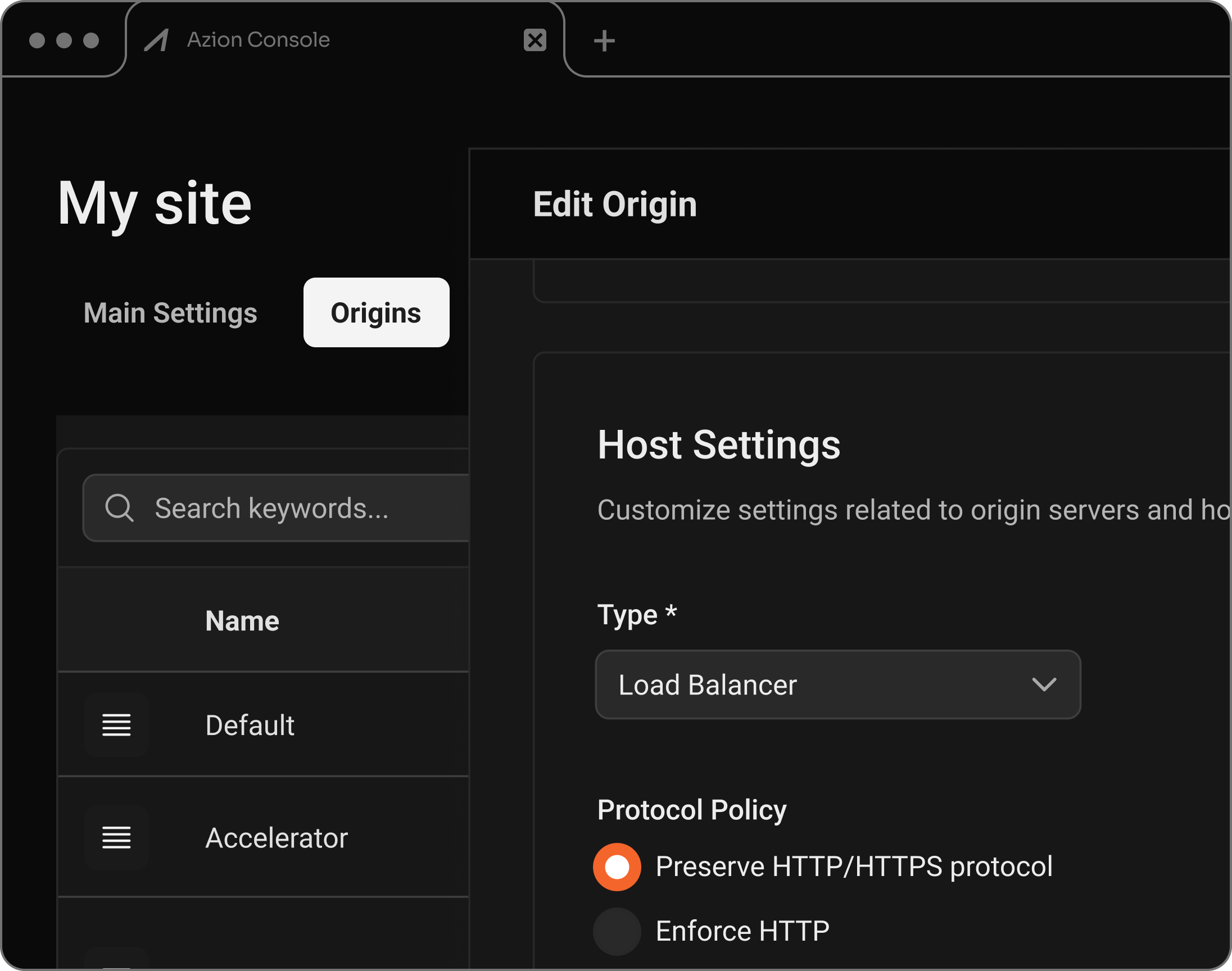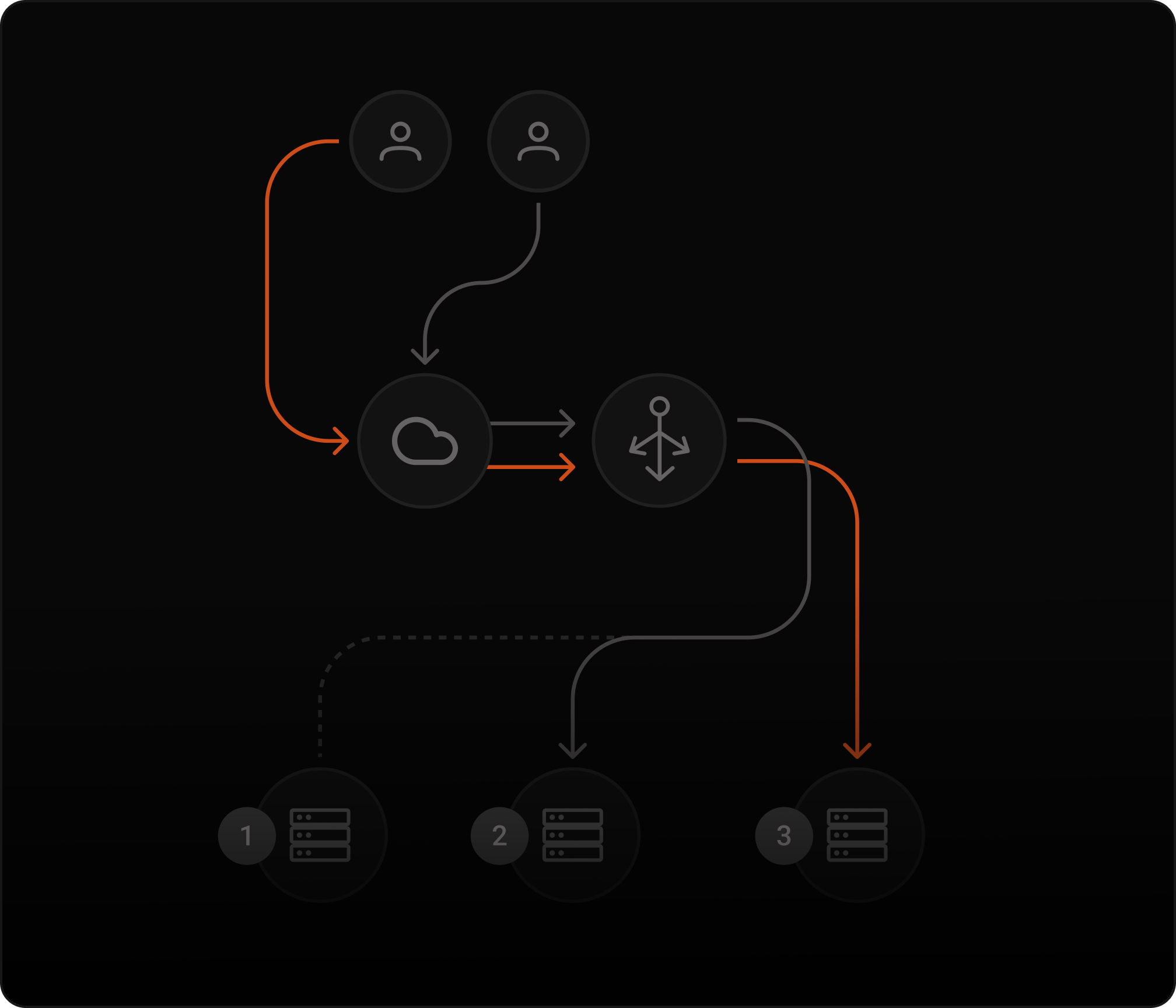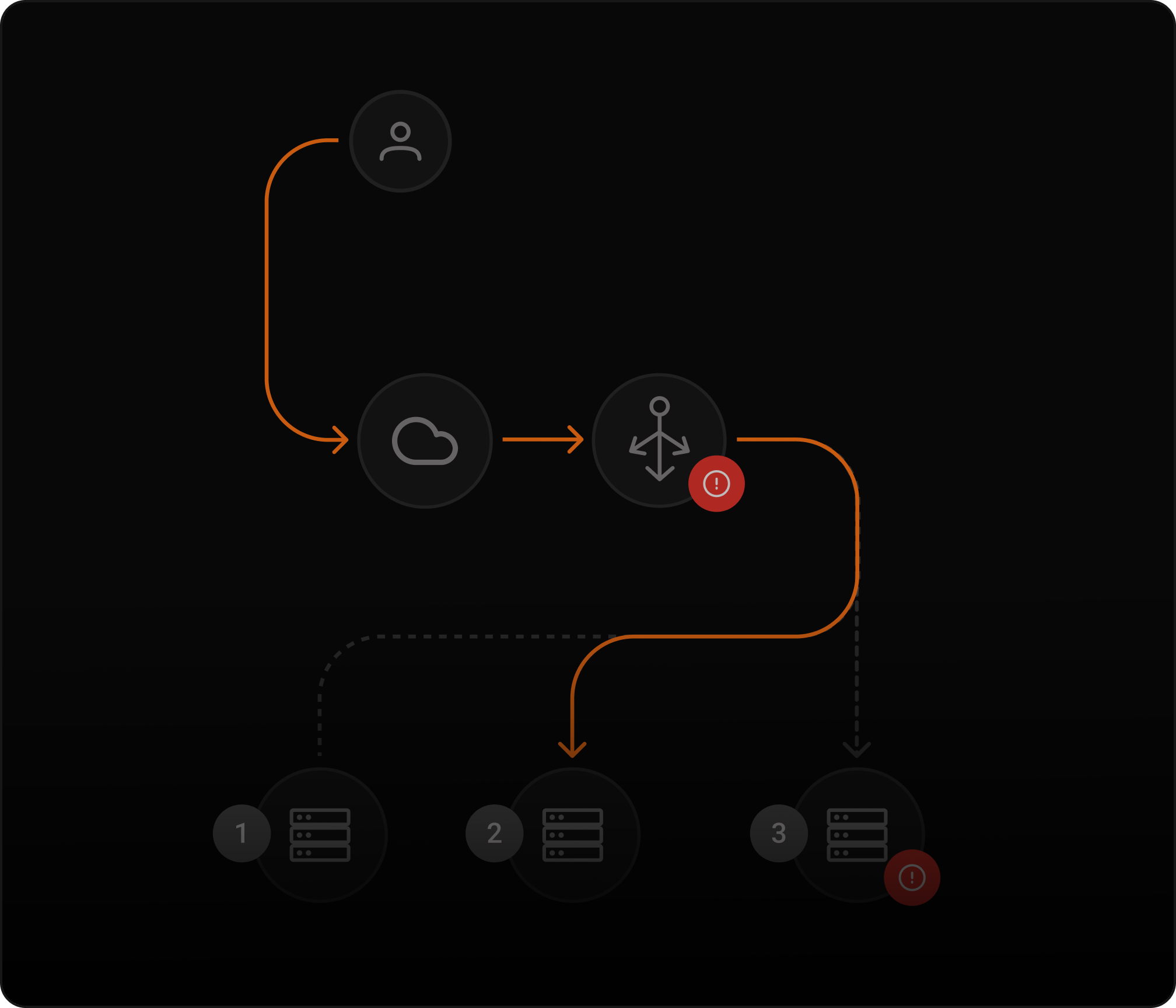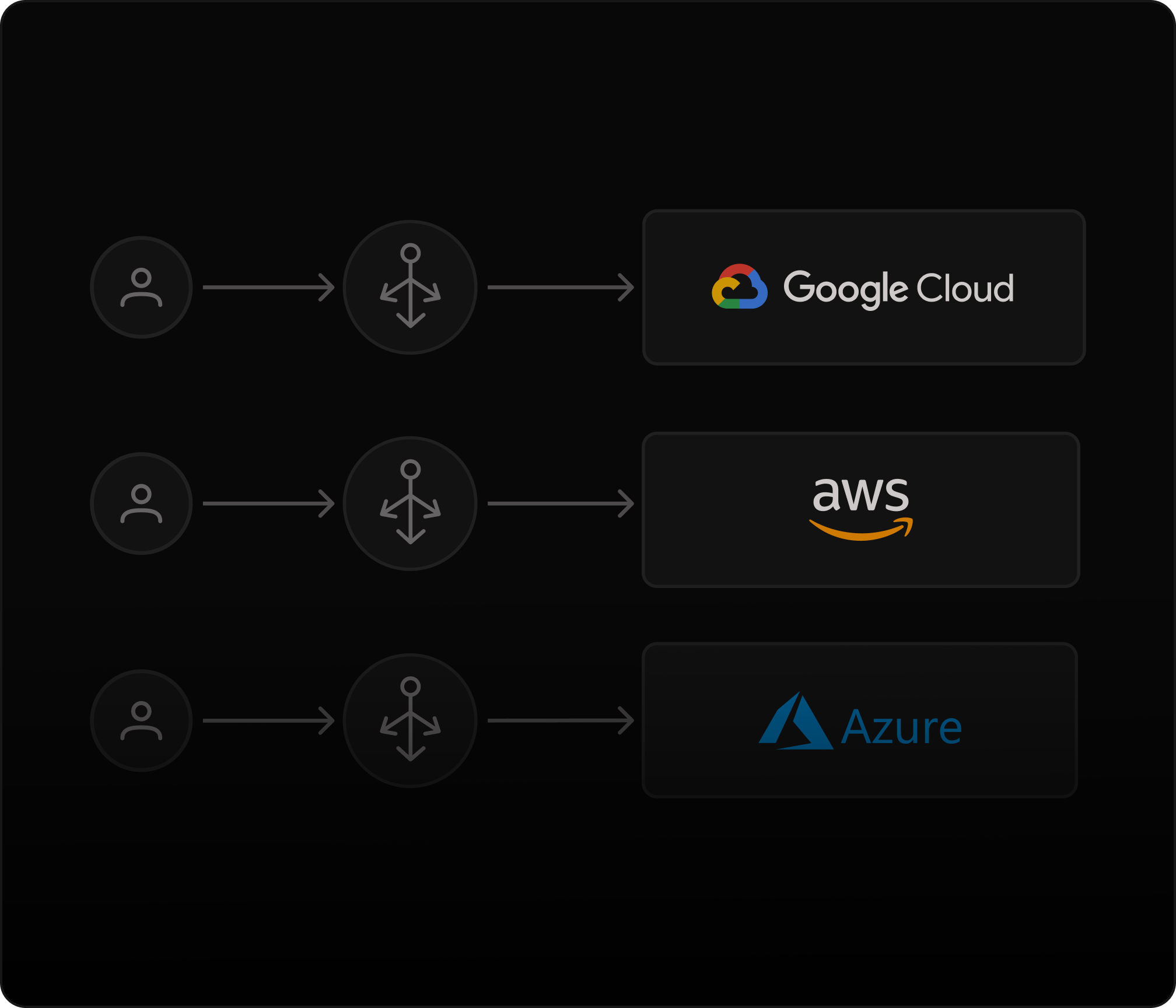protect
Load Balancer
Intelligently distribute traffic across servers and cloud providers to increase the reliability and availability of applications, APIs, and content.

Unlimited Scalability
Deliver fast, stable, low-latency responses to users in any region. Guarantee predictable response times and eliminate bottlenecks, even during high-traffic events.
Actively Manage Your Traffic
Dynamically define policies based on failures or load in real time. Automate routing decisions using performance data to continuously improve application performance and reliability.
Multi-cloud and On-Prem
Deploy the Load Balancer in any environment — multi-cloud, hybrid, or on-premise — without vendor lock-in.
Gain Control Over Your Traffic
Traffic distribution and origin monitoring
Manage requests between servers with configurable algorithms such as Round-Robin, Least Connections, and IP Hash.
Adjust weights, monitor origin health in real time, and keep your infrastructure optimized and stable.

Failover and error handling
Detect origin failures in real time, respond to HTTP 5xx and 404 errors, timeouts, and connectivity loss, and reroute traffic to healthy servers without disrupting service.
Set primary and backup roles to trigger only when necessary, and tune connection and byte-timeout settings to speed detection and recovery.

Multi-origin flexibility and vendor independence
Operate in hybrid environments with multiple data centers and clouds, avoid single points of failure, and scale by adding multiple origin addresses per configuration.
Preserve freedom with a vendor-independent architecture and maintain consistent performance across environments.












